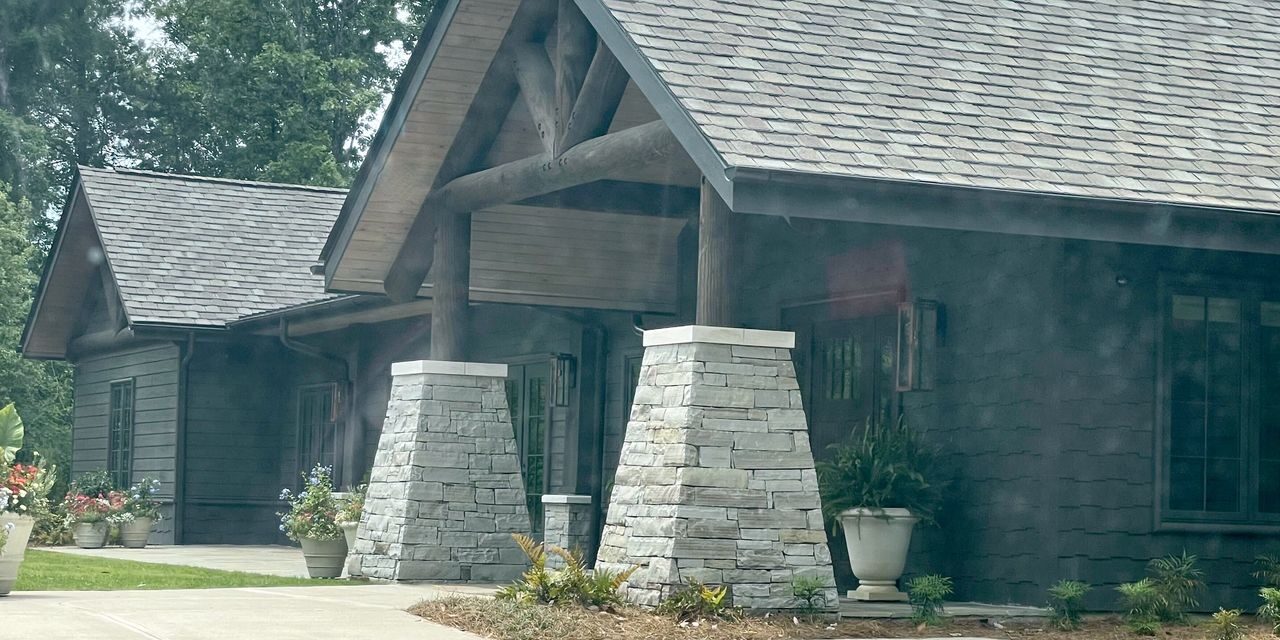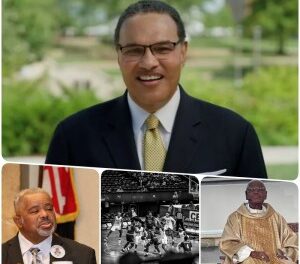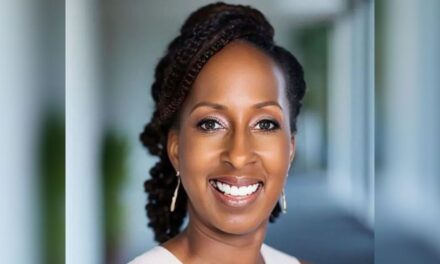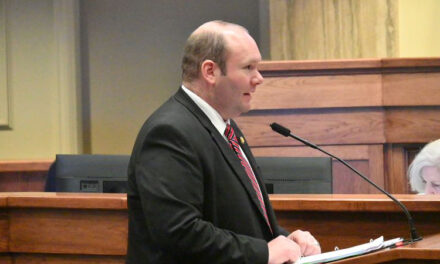Alabama’s largest evangelical megachurch has opened a facility for a pastor restoration program that in the past has sparked controversy and drawn scrutiny.
Earlier this year the Church of the Highlands, a Birmingham-based nondenominational church that claims a weekly attendance of more than 50,000 congregants across 22 campuses in Alabama, opened a new multi-million-dollar center called The Lodge at Grants Mill on its main campus in Irondale.
Highlands founder and Senior Pastor Chris Hodges has described the Lodge as a “pastoral recovery center” and a place where pastors “from all over the world” can “rest, worship and grow.”
It’s an outgrowth of Hodges’ long-term involvement in pastoral restoration, a broad, catch-all term used in evangelical Christian circles to describe a program of faith-based counseling and support typically used by churches to help a pastor work through an issue that triggered removal from leadership.
Hodges told the crowd at a church leadership event in 2021 that he and Highlands Associate Pastor Dino Rizzo were “in the middle of about 20 pastoral, moral failures or restorations right now.”
“I love doing that,” Hodges said at the time. “I want to be known for that.”
But after sexual assault allegations became public against Micahn Carter, a Highlands pastor that church officials later admitted had been working at the church while quietly undergoing a pastoral restoration process, some critics and former staff and congregants have raised questions about the Lodge and the church’s pastoral restoration efforts. They’ve asked for more clarity about who the program serves and how those pastors might interact with staff and church members.
“My biggest concern is, are they being transparent with the congregation and staff about who will be at the Lodge?” said Lauen Shackleford, a former employee and member of Church of the Highlands. “How often would (the pastors undergoing restoration) be around other people? Are they teaching? Are they leading small groups? Are they dangerous?”
“If they’re restoring pastors who are struggling in their lives with something (like depression or suicidal thoughts), that’s admirable. But we don’t know. I feel like the people who are at Highlands deserve to know who’s there with them.”
Shackleford worked at Highlands at the same time as Carter, who’d come to Highlands after pastoring a church in Washington state.
She said the staff were not told about potential sexual assault allegations against him, and instead were told he was at Highlands due to a financial hardship situation with his previous church. After the allegations became public, Highlands leaders admitted publicly that Carter had been brought to Highlands to undergo pastoral restoration. He was removed from staff.
Carter later sued his accuser for defamation. His attorney told Reckon that Carter has no further comment and that the lawsuit is ongoing.
“What worries me,” said Dee Parsons, who writes about church issues on her website and who has followed Highlands’ pastoral restoration efforts since visiting the church a few times with family, “is that I’m not sure they understand that a pastor who has had an affair with a church member, it’s not an affair, in my opinion. It’s clerical abuse.
“If they’re going to take these guys, splash some cold water on their faces and tell them to get back in the pulpit, I think you’re going to see problems.”
Representatives from the Church of the Highlands declined repeated requests from Reckon in 2022 and 2023 to share details about the Lodge, the pastoral restoration process and what kind of issues it is intended to address.
In response to a 2022 request for information about the building and what services it would provide, Hodges’ executive assistant referred a reporter to the church’s website and said the church wanted to make sure that updates about the Lodge came “directly from Pastor Chris.”
Church leaders have not spoken publicly about what types of moral failures or personal issues their program addresses, how pastors are accepted into the program or whether participants are kept separate from congregants.
But a look at the church’s pastoral restoration efforts, as well as pastoral restoration more broadly, sheds some light on a ministry that attempts to bring troubled pastors back into the fold.
The Lodge
The Lodge at Grants Mill sits on a scenic stretch of property just north of the Cahaba River, on a hill behind the church. A paved path connects the building to the main Church of the Highlands parking lot and buildings.
In November 2021, Church of the Highlands submitted a building permit application to the City of Irondale for a 6,500 square-foot facility called “The Lodge Pastoral Retreat.” The application, acquired via a public records request, lists an estimated construction cost of $3.8 million. A September 2021 Highlands report made public by religion reporter Julie Roys listed an estimated construction cost of $4.5 million.
According to a video tour that Hodges shared on his Instagram account in April, the facility features a spacious meeting rooms with rustic beamed ceilings, furnished bedrooms for overnight guests, dining spaces that can accommodate a crowd, and outdoor gathering areas that include a stone fire pit ringed with Adirondack chairs.
In the video, Hodges tells his congregation that “through the leadership of our Board of Trustees and your generosity, we have a place where (pastors) can be hosted, refreshed and trained.”
In May, the Lodge hosted a crowd of pastors as part of a two-day, $5,000-per-person roundtable event hosted by GrowLeader, a for-profit limited liability company launched by Hodges and run by Highlands senior pastor Lee Domingue. The company offers a range of services, including paid mentoring with Hodges and financial coaching with Domingue.
It’s unclear how or if the company supports the Lodge. The Church of the Highlands does not publicly disclose details of its financial transactions. As a religious organization, it is exempt from filing annual returns with the IRS.
Pastor restoration at Church of the Highlands
Pastoral restoration can look different from denomination to denomination, and even from church to church.
It’s typically a process intended to be both spiritual and practical, using prayer, counseling, accountability meetings and other methods to address a pastor’s behavior.
“I think of pastoral restoration as a programmatic attempt on the part of a church or church leaders to reinstate a pastor after some kind of scandal or moral failing, after the offending sin has come to light,” said Katelyn Beaty, an author, podcast host and former managing editor of Christianity Today whose work often examines the role celebrity pastors play in evangelical churches.
Hodges undertook his first pastoral restoration about a decade ago, for his longtime friend and now Highlands Associate Pastor Dino Rizzo.
In 2012, Rizzo was asked to leave the popular Baton Rouge church he pastored and had founded. Hodges brought Rizzo to Birmingham, telling his congregation that Rizzo had been involved in “a brief but inappropriate friendship” at his previous church with a woman who was not his wife. Hodges said he and leaders at Rizzo’s Baton Rouge church created a “restoration” plan for Rizzo.
Hodges told industry publication Ministry Today that it was the first time he’d ever attempted pastoral restoration.
“I so desperately wanted there to be a model,” he said, adding that he believes churches have the responsibility to help ministers who are willing to go through the restoration process.
Rizzo is now a senior pastor and is on Highlands’ leadership team. He’s also the executive director of The Association of Related Churches (ARC), a global cooperative of thousands of evangelical churches that was co-founded by Hodges. Highlands is a member church of ARC, as was Micahn Carter’s previous church.
Hodges’ son Michael has also been through a pastoral restoration process. Michael Hodges was removed from his position as campus pastor at one of Highlands’ satellite campuses in 2017 for what his father said was a “moral failing.” At the time, Baton Rouge pastor Larry Stockstill said Chris Hodges asked him to “take charge of the process of bringing discipline and long-term restoration to Michael,” according to Stockstill. Michael Hodges returned to public ministry two years later.
Shackleford said she worked at Highlands with a male staffer who had come from another ARC church in Washington state and had been installed at Highlands working in student ministry. She later learned the man had been accused of sexual harassment at his previous church. He eventually left Highlands and rejoined the staff at that church.
While he was working at Highlands, she said, the staff was only told he was there to “learn from us.”
“In the moment, I was like, sure, that’s fine,” she said. “But looking back, I’m pretty sure that was a restoration.”
Add that experience to her interactions with Carter, she said, and she has questions about staff safety and transparency. “It’s kind of scary.”
When problems arise
There is no set timeline for a “restored” pastor to return to ministry. Chuck DeGroat, a licensed therapist and a professor of pastoral care and Christian spirituality at Western Theological Seminary, often advises that pastors should sit out of ministry for 10 years.
Not many people follow that timeline, Beaty said. “It’s much more common for the person to be rushed back, out of a sense that we (as Christians) want to be people who are forgiving, loving, gracious,” she said.
Problems arise if the pastor is returned to ministry in a manner that doesn’t address the harm he caused or the need for repentance and change, she said. Parsons, who has written extensively about clergy abuse on her website, said she thinks more resources should be directed toward the people the pastor has harmed, rather than the pastors themselves.
Pastors play an outsized role in their communities because they are considered by their congregations as spiritual counselors who can bring them closer to God, said Everett Worthington, a psychologist and professor emeritus at Virginia Commonwealth University whose research focuses include psychology’s intersection with religion and forgiveness. This is why the pastoral restoration process can be tricky to get right, he said.
“This is not just an ordinary guy in the community who has done a bad thing,” said Worthington. “This person is a spiritual father. There’s an emotional loading to this situation that’s not there with somebody in a similar (non-spiritual) leadership position, say, your boss at work.”
When the restoration process is outsourced to an organization outside of the pastor’s home church, some of the accountability and transparency that’s necessary for church healing can be lost, Beaty said.
“Those accountability structures need to be woven into the life of the church, rather than just being exported out.”
Shackleford said the idea behind giving pastors a place to rest and recharge is a good one.
“Ministry is so mentally, physically and emotionally taxing, it’s easy to get burnt out and you don’t know who’s struggling,” she said. “That’s something my husband and I dealt with. Having a place for pastors to come who feel like they have nothing else to give would be great.”
But she said that if Highlands plans to make pastoral restoration at the Lodge a permanent ministry, she hopes that Hodges and other leaders will be open about what the ministry does and doesn’t do.
“(Highlands leadership) have a history of not being very transparent with things they think are scandalous or could cause a problem,” she said. “They’ll see (not sharing information about the Lodge) as protecting these pastors, but it comes off as being suspicious.
“Complete transparency would be the healthiest thing they could do.”










